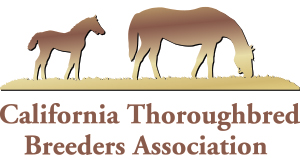From CHRB
SACRAMENTO, CALIF. (June 2, 2017) — The State of California has officially approved rules establishing that race-day medication must be administered by independent veterinary professionals – further aligning California with the national uniform medication program.
The California Office of Administrative Law advised the California Horse Racing Board on Thursday that amendments to CHRB Rules 1433 and 1845, which the Board approved in April, have passed review and can now go into effect, with full implementation expected later this year
California joins 20 states across the nation that have adopted the policy governing third-party Lasix, which was developed by the Racing Medication and Testing Consortium (RMTC) and is a key component of the National Uniform Medication Policy promulgated by the Association of Racing Commissioners International (ARCI).
Lasix, generically furosemide, will be the only authorized bleeder medication and the only medication that can be administered to horses on the day they race. Lasix must be administered by Board-approved independent veterinarians within certain timeframes, methods, and doses, and the syringes used for those injections will be retained for future analysis as needed. Other requirements and restrictions imposed by the new rules will further improve race-day security.
Now begins the process of instituting agreements, policies and procedures at all operating racetracks in the state that will not only prohibit private, practicing veterinarians employed by trainers and owners for the care of their horses from administering race-day medication but also place that responsibility on independent veterinary professionals who otherwise have no business affiliation with those owners and trainers.
The new rules require the horsemen’s organizations representing the various breeds – the Thoroughbred Owners of California (TOC), Pacific Coast Quarter Horse Racing Association (PCQHRA), and California Harness Horsemen’s Association (CHHA) – to include in their purse agreements with racing associations third-party Lasix administrations contracts for CHRB approval.
“We are pleased with the final resolution of this medication issue,” said Mary Forney, Executive Director of the Thoroughbred Owners of California. “The TOC has worked with the CHRB for several years to develop acceptable protocols for third-party Lasix administration. We have consistently supported the national Uniform Medication Guidelines, which allow for pre-race, third-party administration of Lasix, a therapeutic medication that has been consistently shown to decrease the incidence and severity of EIPH (exercise induced pulmonary hemorrhage).”
“Third-Party Lasix is a policy The Stronach Group and our horsemen have supported to ensure integrity and transparency for all horses competing in California,” said Joe Morris, The Stronach Group’s Senior Vice-President of West Coast Operations. “This rule change along with the state-of-the-art new video surveillance system that covers the entire stable area at Santa Anita will lead the industry with the highest standards of safety and security.”
It will take some time for the horsemen’s organizations and racetracks to identify and approve independent veterinary professionals to do the work and for the CHRB and stakeholders to develop procedures for each facility. To help ensure the smoothest possible transition, the CHRB is providing everyone with ample time to make the necessary adjustments. The changes are expected to go into effect at all tracks by December 26, 2017.
Among the other requirements of the new rules:
· Trainers, owners and practicing veterinarian will be required to consult with the third-party Lasix veterinarian to determine the appropriate dosage of Lasix for each horse. However, the maximum permitted amount of Lasix will remain unchanged at 150-500mg of furosemide by IV injection.
· The policy requiring horses receiving Lasix to be on the grounds five hours prior to racing is now required by regulation.
· Horses receiving Lasix will be assigned a pre-race security stall. The policy requiring signage identifying a horse is running on Lasix is now a regulation and such signage must be in place eight hours prior to racing.
· Trainers are required to maintain or have maintained constant care, custody, control and constant view of horses in their pre-race security stalls.
· Language has been included clarifying that the trainer or a licensed employee of the trainer is required to be present and sign the bleeder treatment report written by the person administering the medication.
· Third-party Lasix services will be contracted through the horsemen-association agreement and all costs are to be paid, as now, by the owners.
· Language has been included, as requested by the California Veterinary Medical Board (CVMB), defining conditions necessary for the third-party Lasix veterinarian to meet CVMB veterinary-client-patient relationship requirements.
· The rules require the Lasix syringe to be securely stored by the CHRB and made available for testing by the Board in the event of an adverse drug finding.
· The rules include language on procedures for the Lasix veterinarian to deal with medical emergencies.


